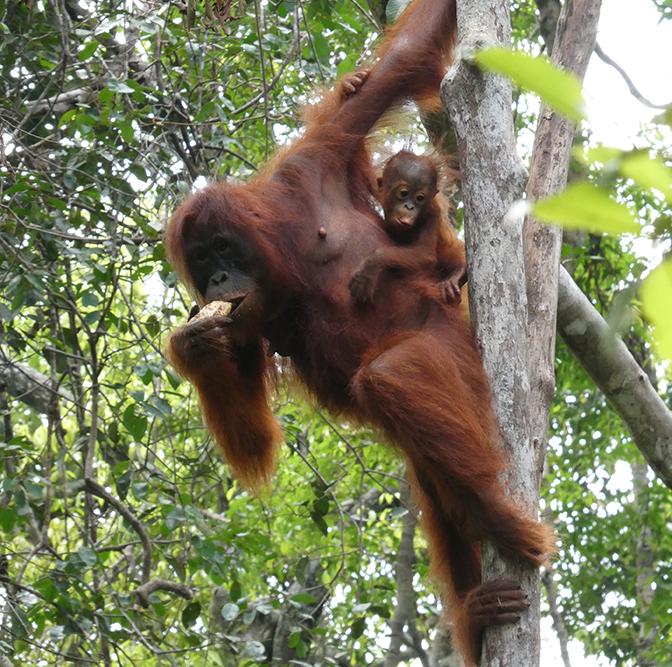
Refiguring Conservation in/for ‘the Anthropocene’: the Global Lives of the Orangutan (GLO), a European Research Council-funded project led by Dr Liana Chua, has concluded after nearly six stimulating years (2018-23).
GLO explored the social, political, aesthetic, and affective dimensions of orangutan conservation against the backdrop of the Anthropocene—when multiple, interlocking environmental and social crises are blurring the distinctions between ‘humans’ and ‘nature’. Comparing different ethnographic areas, the project traced how ideas, people, funds, and practices travel (or fail to travel) between various sites of orangutan conservation, as well as the effects that they generated as the orangutan move. The project asked: how is one conservation network transforming itself to deal with the challenges and possibilities presented in and by the Anthropocene? And, by extension: what might critical ground-level ethnographic analysis reveal about how the Anthropocene is conceived and encountered, as well as how this concept transforms conservation spaces?
To address these questions, the GLO research team carried out simultaneous ethnographic research in Borneo, Sumatra, and the UK. Their research revealed how Indigenous and other rural communities in and around orangutan habitat did not always share Westerners’ concern for these animals. Instead, many villagers felt that orangutan conservation interventions set one animal apart from its wider multispecies environment, thus undermining the moral conventions that governed human and nonhuman interactions within it. Conservation interventions exacerbated these concerns, by disrupting local livelihoods and customary land rights. For many people, conservationists, the state, companies, and other external parties were not clearly distinguishable: all were interested in communities’ land for different reasons, and all could bring with them both benefits and dangers. These tensions often put locally based conservationists in complicated mediatory positions as they juggled conflicting pressures and ideals on the ground.
Ethnographically, much of GLO’s research fed into ongoing interdisciplinary conversations about inequality, vulnerability, and social justice in conservation settings. However, the project also did more generative work. For example, the research contemplates how we might approach the Anthropocene not as an all-encompassing, universal condition, but through the lens of responsibility—a move that highlights the uneven causes and impacts of current planetary crises and raises questions about accountability and redress for the future. A virtual exhibition, Orangutan In/visibilities, takes the form of a visual thought-experiment: what would orangutan conservation would look like if it didn’t centre the orangutan? By making visible what is often glossed over by charismatic images of orangutans—local expertise, manual labour, knowledge practices and indigenous environmental relation—the exhibition inspires thought about the gaps and tensions that exist in orangutan conservation. A collaborative article by GLO members and orangutan conservationists explores the possibilities for pushing conservation-social science engagements beyond mere critique or appropriation and lays out various recommendations for more equitable, decolonial collaboration between the two fields.
This final example reflects GLO’s interest in constructively engaging with conservation scientists and practitioners. To this end, the team produced a set of resources including an ethnographic methods toolkit (English and Bahasa Indonesia) for orangutan (and other) conservationists, designed and carried out ethnographic methods training for NGOs in Indonesia, and arranged a symposium on decolonizing conservation at the Cambridge Conservation Initiative. These collaborative, activities filled the final months of the project and served as the basis of new activities and collaborations going forward.
